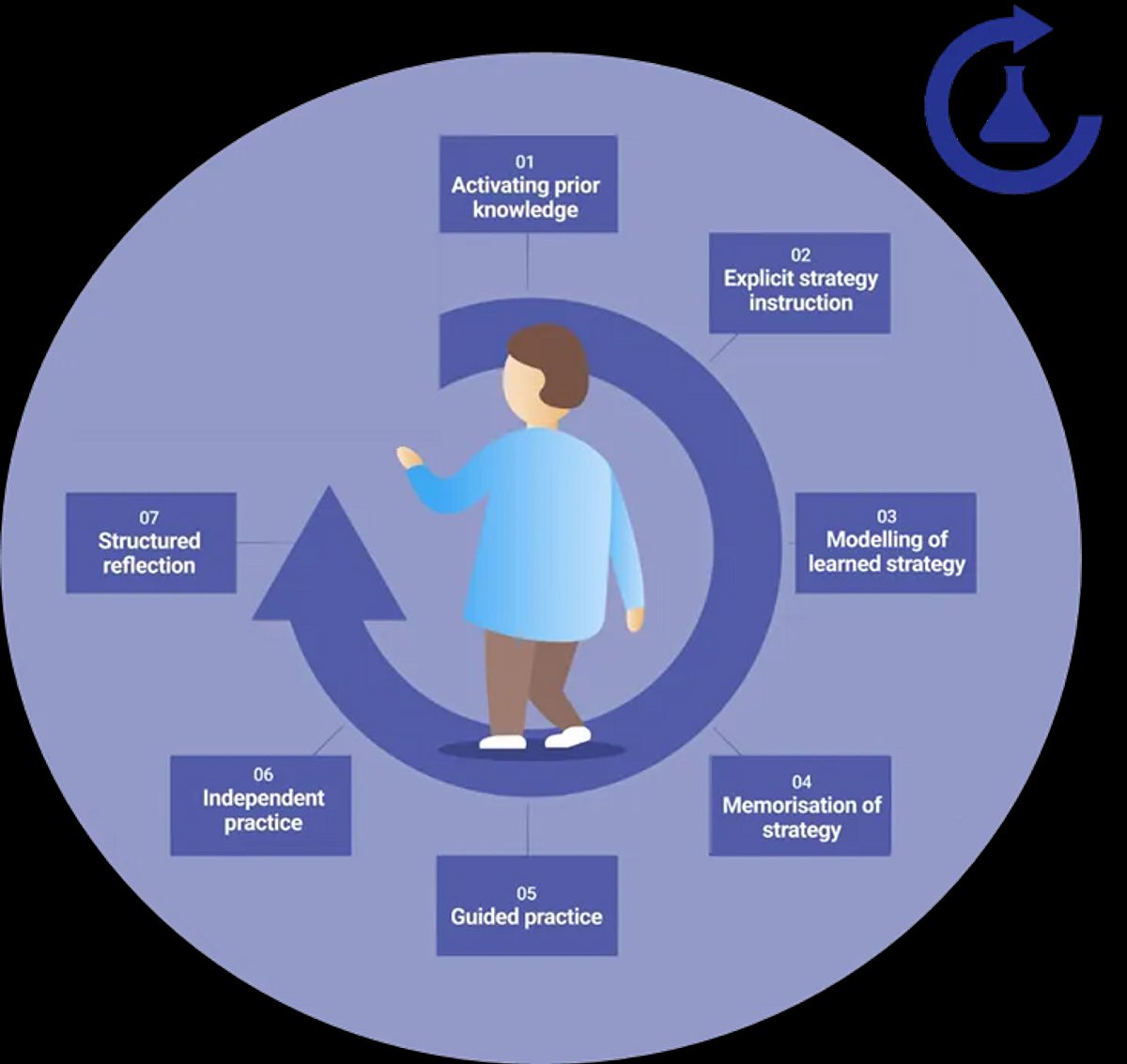
Blog -

Share on:

by Manchester Communication Research School
on the
Becky Grimshaw, Assistant Director of Manchester Communication Research School
Introduction:
Science education is not merely about memorising facts; it’s about nurturing the ability to think like a scientist. Working scientifically involves integrating scientific content knowledge with an understanding of scientific processes and methods. Guiding pupils through this process is crucial for their development as independent thinkers and learners. In this blog, we’ll explore the importance of guiding pupils to work scientifically and provide a practical science example of the seven-step model from the EEF’s Metacognition and Self-regulated Learning Guidance Report.
Why It’s Important:
Working scientifically challenges both teachers and pupils. From measuring a volume of water to recording data whilst understanding scientific procedures, there’s a lot to consider. Without proper guidance, students may get lost in the details, hindering their deeper understanding of scientific concepts. Guiding pupils to work scientifically not only enhances their ability to think like scientists but also supports them in grasping challenging scientific concepts more effectively.
How to Implement This Recommendation:
The seven-step model outlined below serves as a practical framework to guide pupils toward becoming independent scientists. This example is a KS1 lesson sequence on the topic of magnets. This sequence could be carried out over one or a sequence of lessons.

1. Link New Learning to Prior Knowledge:
- Identify what pupils already know.
- Relate new information to prior knowledge to inform the lesson’s pace.
Example:
Class discussion on what they know about magnets. Show them a variety of magnets and share the names of the different types of magnets. Key questions could be:
What do magnets pick up? Do magnets pick up paper? Is paper magnetic?
2. Explicitly Teach Knowledge and Skills:
- Clearly define learning intentions.
- Address common preconceptions early on to prevent misconceptions.
Example:
Introduce the words ‘attract’ and ‘magnetic’. Develop oracy skills through choral chanting of the words. As a group or class create a table with two headings of ‘Attracted’ and ‘Not attracted’.
Show the children a collection of objects and ask them to predict which ones will be attracted and which will not, and why.
Lookout here for misconceptions to address further in the lesson such as ‘all metals are magnetic’.
3. Modelling:
- Demonstrate expected behaviour and thinking.
- Provide examples, non-examples, and partially worked examples.
Example:
Model to students how to predict. This could be done by using pictures of various materials or a limited number of the ones to use in the practical. Use metacognitive strategies such as talking aloud to model your thinking and how to predict.
4. Memorisation:
- Use assessment techniques like hinge questions or low-stakes quizzes to gauge understanding.
- Encourage memorisation to reinforce learning.
Example:
Using the same pictures from the board, the material from the practical or concept cartoons, students can work in pairs to predict a material they think is magnet or not magnetic.
5. Guided Practice:
- Introduce practical work to reinforce learning and develop scientific skills.
- Clearly define learning outcomes for practical work.
Example:
Provide children with magnets and let them test the objects to find out if they are magnetic. They could put a tick on the list next to those objects about which they were correct and a cross next to those they were wrong about.
6. Independent Practice:
- Gradually reduce support as pupils gain knowledge.
- Encourage students to work more independently.
Example:
Once this previous practical is complete it could be developed further by students could try wrapping magnets in paper, cloth, foil and other materials, to find out if they still attract the magnetic materials.
7. Discuss and Reflect:
- Provide opportunities for pupils to summarise and receive feedback.
- Foster discussions on the coherence of conclusions and potential improvements.
Example:
After they have tested the objects, invite feedback. What kinds of materials are attracted to magnets? Are all metals attracted? Draw out the misconception that only metals are attracted, but not all metals.
Conclusion:
By following the seven-step model, teachers can guide pupils to work scientifically effectively. This approach not only equips students with the necessary scientific knowledge and skills but also promotes independent thinking and a deeper understanding of scientific concepts. As we implement these steps, we lay the foundation for a generation of students who not only learn about science but learn to think and work like scientists.
References
EEF. (2023) Improving Primary Science Guidance Report.

Blog -

Blog -
By Becky Grimshaw

Blog -
Becky Grimshaw explains how to revise and renew your pupil premium strategy for the upcoming school year.
This website collects a number of cookies from its users for improving your overall experience of the site.Read more